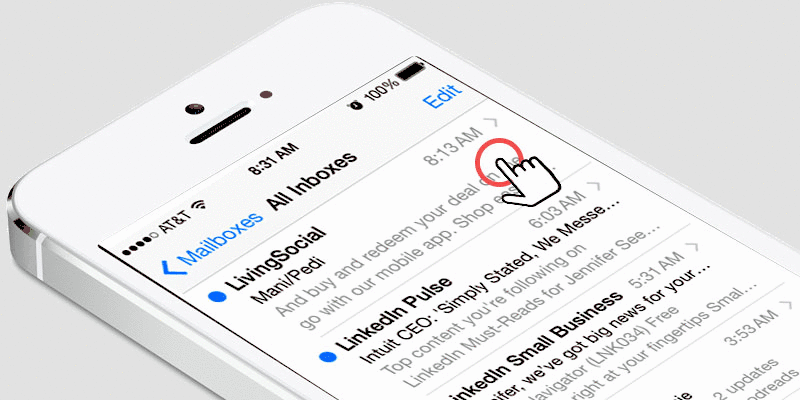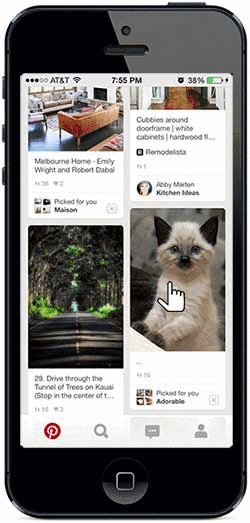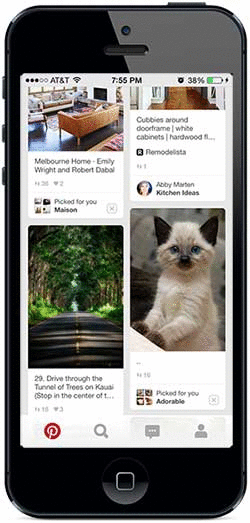Tap-tap-tap. Tap-tap-tap. Tap-tap-tap is boring, and in the face of increasingly smarter technology, tap-tap-tap has lost its poetry.
Mobile gestures to complete common actions or launch important shortcut menus are expected, and if your app relies on tap-and-wait interfaces, the mobile experience will feel clumsy, outdated, and easily abandoned if another alternative is available—regardless if that alternative lacks a few of your killer features. Don’t limit an app’s features out of fear that some users will not immediately discover and learn gesture controls. But be smart about it. Gestures must feel natural and should be paired with more obvious tap interfaces. This combination will allow more advanced users to get actions done more quickly, while less savvy users will avoid being frustrated because of the availability of easily identifiable controls.

Help people get things done and make them happy.
Pinterest is an example of a well-implemented gesture control paired with the more standard tap driven interface. By pressing down on an image in the feed, a quick menu of common actions is displayed. The fluid and natural interaction with the gesture-driven shortcut menu allows the user to quickly like and share without leaving the screen or losing momentum. This action can also be accomplished through a tap-driven series of actions.


In the competitive music streaming market, gesture controls make or break a user experience. Allowing users to quickly discover, favorite, and sort selections when you have mere seconds of their attention is what Spotify does exceedingly well. Their new Touch Preview feature allows you to preview a short snippet of a song by pressing down on track. Want a new track? Simply drag your finger onto another song. Like what you hear? Swipe a song to the left to add it to My Music and swipe to the right to add it to your play queue.
Give hints and make gestures easily discoverable.
Common gestures — scrolling, swiping, tapping, pinching, poking, flicking, dragging, and shaking are not the same from device to device (i.e., iPhone to Windows phone). Clues (show a portion of an image so the user intuitively swipes to reveal more of the image) and cues (give a peek at additional controls using animation and then hide them off screen) must be used for gestures to be successfully discovered and learned. Do not expect instructional tips that display once or twice to be enough.
It’s complicated.
Gestural control is showing up in the most unlikely of places. Most of us have quickly adjusted to hands free sinks and towel dispensers in public restrooms. But how many different gestures can we adopt before all the variations start to overwhelm? The future is only going to bring smarter devices that accept a wider variety of gestures. Devices will track your eyes, voice, and even your facial expressions—physical touch will no longer be necessary. And all these variations will require users to be more familiar, more savvy, and remember exactly which interactions are expected for each gesture controlled device.
What makes a good gesture?
It feels natural and easy to complete even while holding your phone in one hand and your impatient leash-pulling dog in the other. As phones get larger and the average person doesn’t have hands like Shaq, this requirement is getting trickier.
It’s easy to learn and easy to recall. You shouldn’t have to struggle to complete the gesture or forget it because it is too complicated.
It helps you accomplish the things you want more quickly and keeps you in the zone. If an app is easy to use and interactions are enjoyable, users will stay engaged.
The take-away
Apps lacking in well-designed interfaces and thoughtful gesture controls will feel stale and outdated. The result will be lackluster user experiences that will suffer from low adoption, and at the worst, frustration and abandonment.
What are some of your favorite gestures? What apps processes do you get frustrated with that could be improved with gestures?


